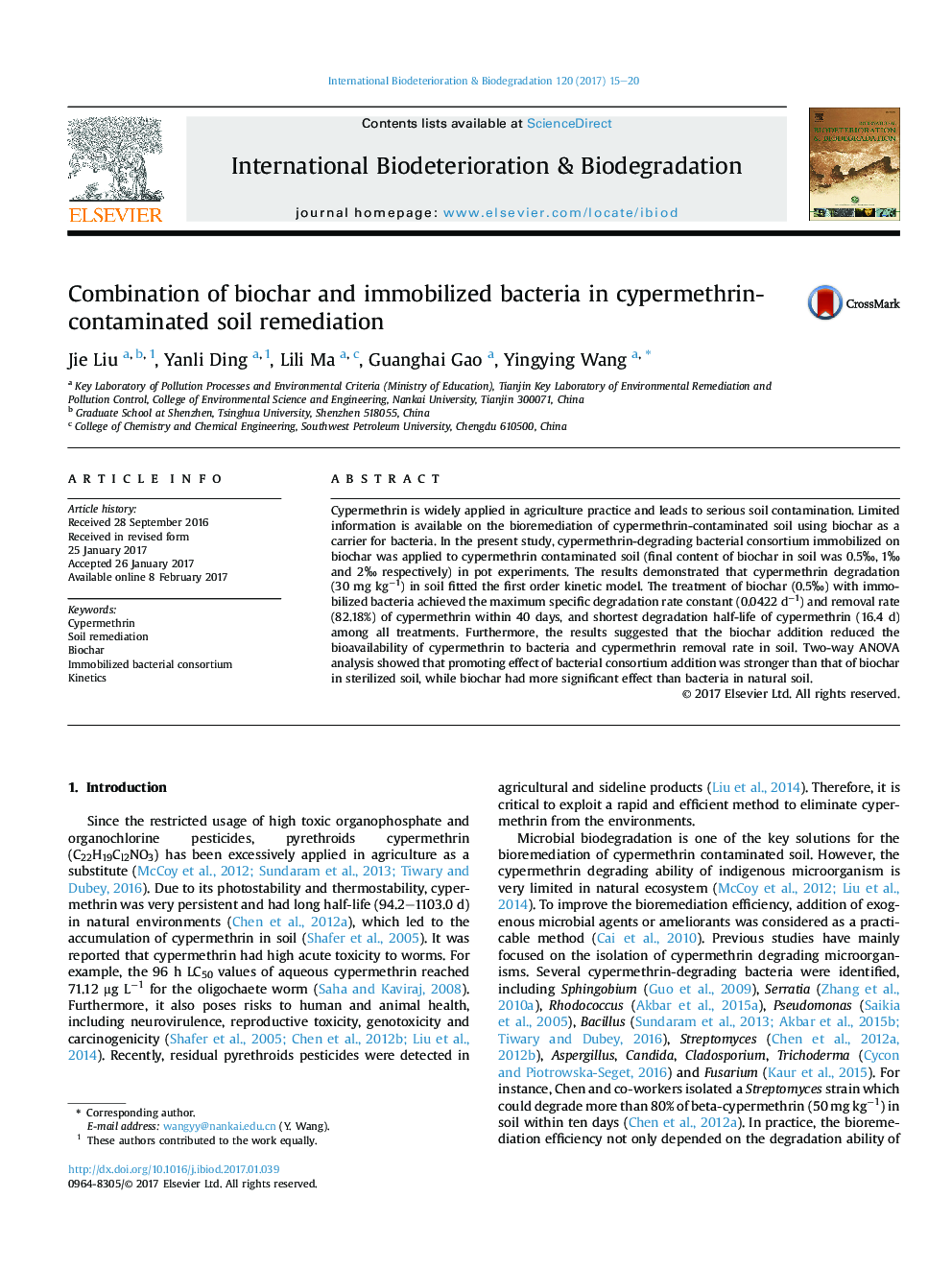| Article ID | Journal | Published Year | Pages | File Type |
|---|---|---|---|---|
| 5740384 | International Biodeterioration & Biodegradation | 2017 | 6 Pages |
â¢Biochar was applied as a carrier for cypermethrin-degrading bacterial consortium.â¢The cypermethrin removal process fitted the first-order kinetic model.â¢Biochar addition reduced the bioavailability of cypermethrin.â¢Biochar in combination with bacteria could effectively remove cypermethrin.
Cypermethrin is widely applied in agriculture practice and leads to serious soil contamination. Limited information is available on the bioremediation of cypermethrin-contaminated soil using biochar as a carrier for bacteria. In the present study, cypermethrin-degrading bacterial consortium immobilized on biochar was applied to cypermethrin contaminated soil (final content of biochar in soil was 0.5â°, 1â° and 2â° respectively) in pot experiments. The results demonstrated that cypermethrin degradation (30 mg kgâ1) in soil fitted the first order kinetic model. The treatment of biochar (0.5â°) with immobilized bacteria achieved the maximum specific degradation rate constant (0.0422 dâ1) and removal rate (82.18%) of cypermethrin within 40 days, and shortest degradation half-life of cypermethrin (16.4 d) among all treatments. Furthermore, the results suggested that the biochar addition reduced the bioavailability of cypermethrin to bacteria and cypermethrin removal rate in soil. Two-way ANOVA analysis showed that promoting effect of bacterial consortium addition was stronger than that of biochar in sterilized soil, while biochar had more significant effect than bacteria in natural soil.
